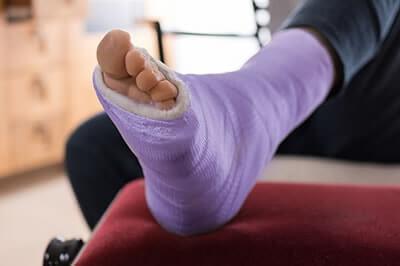The Road to Recovery: What to Expect After a Bone Fracture
Bones may be sturdy and strong, but they’re still vulnerable to breaks and damage. And when fractures occur, they can affect every aspect of daily life.
But there’s good news: With expert care, you can face the road to recovery with the tools you need to avoid future complications.
Dr. Jared Tadje has 15 years of experience treating fractures at Tadje Orthopaedics in Meridian, Idaho. His strong referral network keeps him busy with a high volume of bone fractures from local emergency rooms and urgent care centers. But Dr. Tadje keeps appointments available to ensure you get the expert care you need when you need it most.
If you have a fracture, here’s what you can expect during the recovery process.
Fracture Treatment
Fractures can vary in severity. As a result, some broken bones require more extensive treatment, like surgery. Depending on the break and its location, Dr. Tadje might rely on a variety of approaches, such as:
-
A traditional cast made with fiberglass or plaster
-
A functional brace or cast that allows limited and controlled movement
-
Open reduction to surgically repair a break and stabilize the bones
This step plays a crucial role in restoring a fracture’s anatomic position to support ideal healing.
The First Few Weeks
After Dr. Tadje treats your break, it’s time to focus on healing and rehabilitation.
Within the first few days of a fracture, your body starts developing tissue and cartilage around the break. This process, known as repairing or the reparative phase, can last 2-3 weeks and results in new growths of tissue, or calluses.
Calluses work to connect the two broken pieces of bone and restore some stability to the fracture. Eventually, spongy trabecular bone replaces the calluses.
In this stage, you should notice your pain improving. It’s also common to begin physical therapy during this time, sometimes before you leave the hospital.
By Week Six
Generally speaking, the soft callus should be hardening by week six, and the remodeling stage begins. At this point, solid bone starts to replace the repair tissue. And if you heal properly, the broken bone should begin to look the way it did before your injury.
While it can take up to a year for a bone to finish the remodeling stage, you can often expect to heal from the average broken bone within 6-8 weeks. The timing can vary depending on the location and severity of your break.
How to Support the Recovery Process
If you have a broken bone, Dr. Tadje can offer personalized guidance on what to expect from the recovery process based on your injury and treatment. You can also play a proactive role in the healing process, such as:
-
Resting and getting enough sleep
-
Following your doctor’s recommendations
-
Participating in your physical therapy program
-
Taking your medication as directed
-
Eating a healthy and nutritious diet, rich in vitamin D and calcium
-
Quitting smoking
-
Avoiding alcohol
With expert care, you should be on the mend in no time. But always talk to Dr. Tadje before resuming sports and physical activities to ensure you won’t put your recovery at risk.
Did you break a bone? Get expert fracture care with Dr. Tadje at Tadje Orthopaedics in Meridian, Idaho. Contact our office to schedule a consultation by calling 208-515-2654 today.

